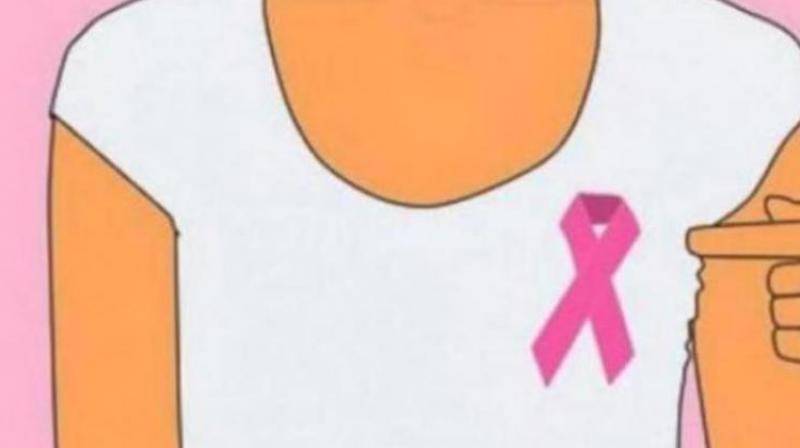Relief for double breast cancer patient

Bengaluru: Thanks to latest technology and surgical techniques, a 43-year-old cancer patient got a new lease of life.
City doctors treated a rare breast cancer that occurs in both breasts at the same time which is referred to as synchronous bilateral breast cancer (BBC), which is a mere 3 percent of all breast cancers.
Ramya (name changed) felt a painless lump in her left breast. When she got it checked at a nearby hospital, it was diagnosed as a non-cancerous lesion. But she continued to feel uneasy and decided to go in for a second opinion. Following the complete evaluation and assessment from BGS Gleneagles Global Hospitals, doctors recommended a bilateral mammography which revealed multiple small lumps in the right breast too. However, doctors suggested her to undergo PET CT scan which confirmed that she had cancer in both breasts.
Oncologists from all three divisions, surgical, medical and radiation, came together to discuss the treatment plan in the tumour board. The lump that was removed in surgery was sent for a special investigation, called ‘Frozen section’ pathology, to see if the margin of tissue removed with lump excision was adequate. Additionally, a dye was injected around the lump before its removal to precisely locate the lymph nodes that might be involved with this cancer in the axilla and only those lymph nodes were removed.
Dr Mathangi J., Senior Consultant and In-Charge, Department of Radiation Oncology at BGS Gleneagles Global Hospitals, said, “There are some specific advancements that have happened in the past decade in the management of breast cancers to not only improve local tumour control, faster recovery with lesser complications and better cosmoses but also to reduce long-term side effects.”
After chemotherapy, Ramya underwent four weeks of radiotherapy. Both the breasts (chest wall) should be irradiated with no union of the fields avoiding over or under-dosing of the treated areas. The doses to heart and both lungs should be kept minimal. She was taken up for deep breath hold training for one week. The software detects her respiration in deep breath hold and 4D CT scan is done only in this phase. When the patient holds her breath in deep inhalation, the lung balloons out between the chest wall (the area to be treated) and the heart. This simple technique helps the doctor to plan the treatment with the least dose to the heart. The Gating software with the state-of-the-art treatment machine –
“TrueBeam STx” linear accelerator – keeps it simple and sophisticated by allowing treatment only if the patient holds the breath in the specified phase and automatically going off when it is not so.

